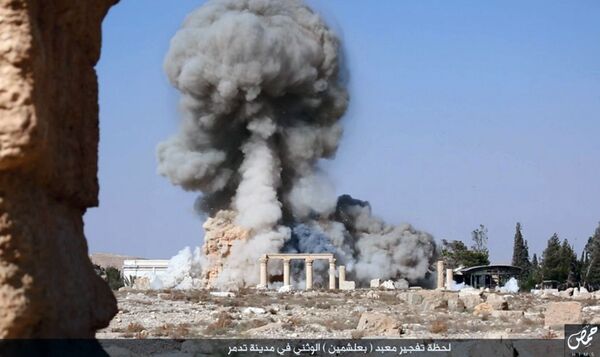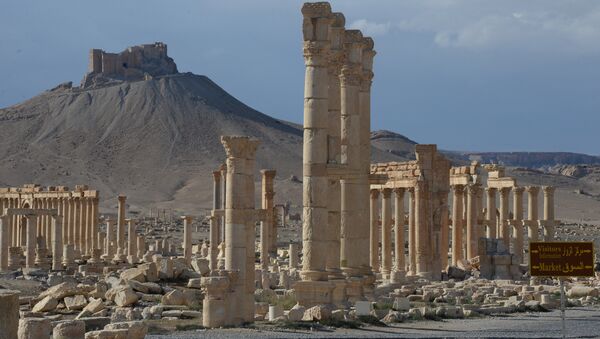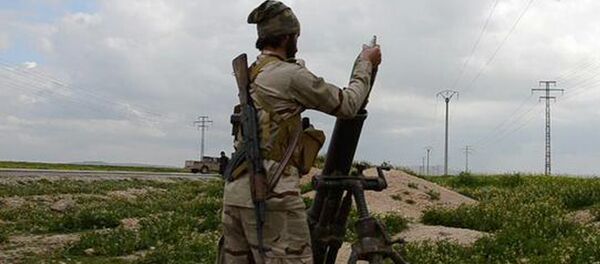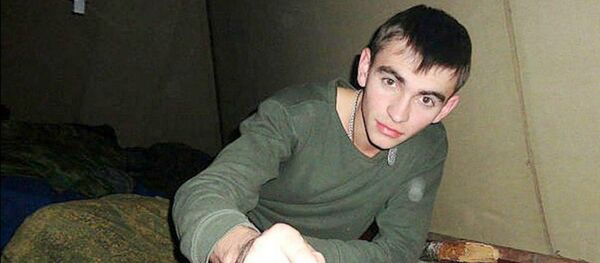In an interview with Sputnik, foreign policy expert Andranik Migranyan confirmed that liberation of one of the greatest historical monuments in the world should have necessarily attracted major global attention. But it did not.
"There is no way that the West could have truly appreciated and celebrated this event since the city was freed by the Syrian Arab Army assisted by Russia," the political scientist explained. He called Palmyra's liberation "a triumph" both for Damascus and Moscow, but added that the strategically important city was freed by those people, whom the West "would not really want to see as triumphant."
The lack of positive coverage could be explained by the fact that the forces that liberated Palmyra were not sponsored by the West. Palmyra was freed "by 'bad guy' Assad, who was assisted by 'bad guys' from Moscow. Sadly, this is the logic of the [Western] media scene and the political space," Migranyan added.

Daesh captured Palmyra in May 2015. In the ten months that followed the brutal group, notorious for destroying pre-Islamic heritage, leveled the Temple of Bel, the Temple of Baalshamin, the Arch of Triumph and several funerary towers. The militants also used the ruins to stage mass executions. Some of the priceless artifacts on display at a local museum were smashed or defaced.
The true scale of destruction currently remains unknown, but the picture will become clear as demining experts and archeologists flood to the ancient ruins. Some have been terrified by the damage done to Palmyra.
"I was surprised when I read that the scale of destruction in Palmyra was less than feared. For an archaeologist [the damage] is catastrophic," Sabine Ladstaetter of the Austrian Archaeological Institute told Austria's national public service broadcaster, ORF.
The 12-century church is as much a symbol of Vienna and Austria as Palmyra is a symbol of Syria.
Maamoun Abdelkarim, Syria's top archeologist and the director of antiquities, maintains that some of the damage could be undone. "What was said about it all being turned to dust — it's not dust," he told Reuters, referring to the Temple of Bel. "There is still a lot of the structure… that can be reused and renovated."






